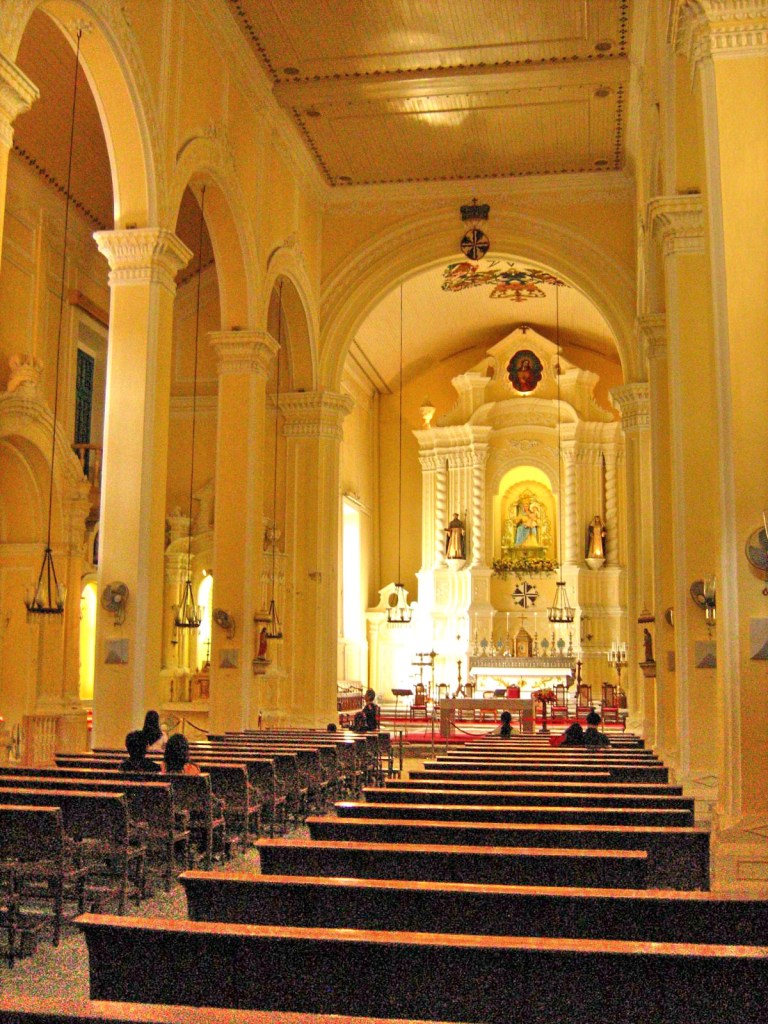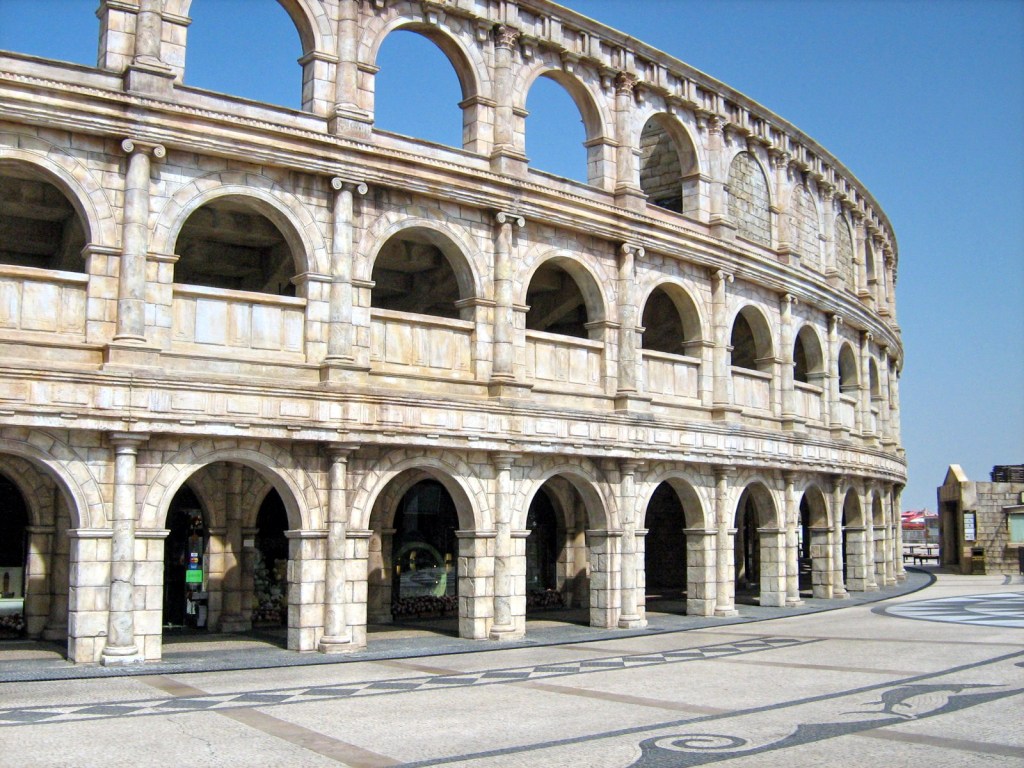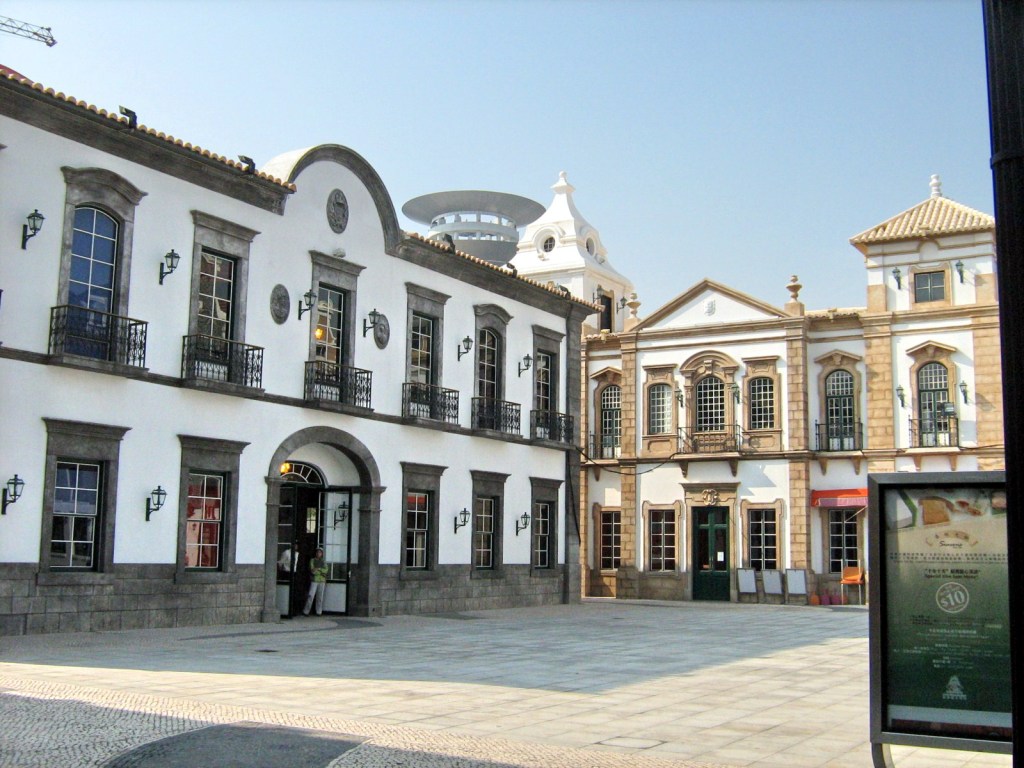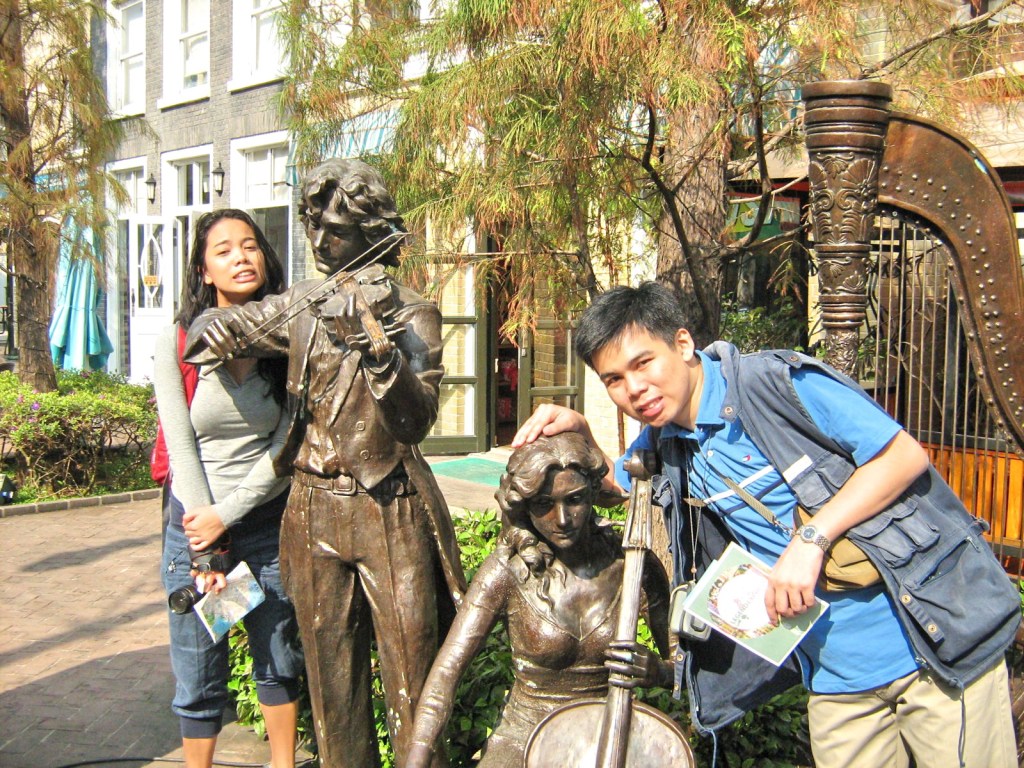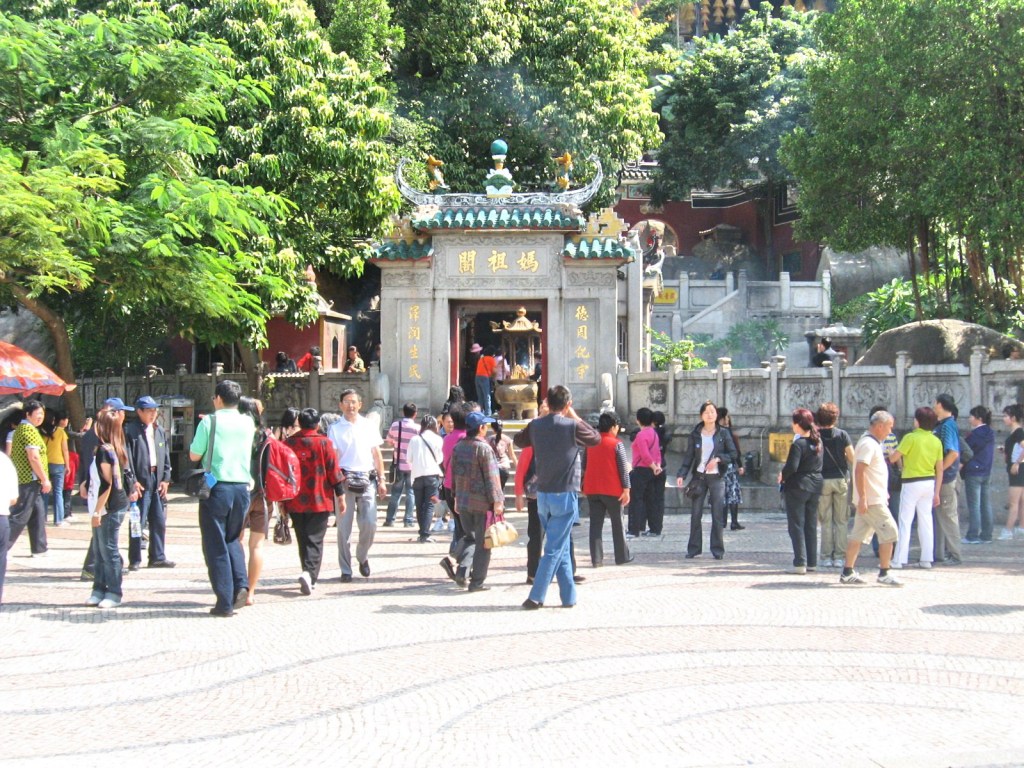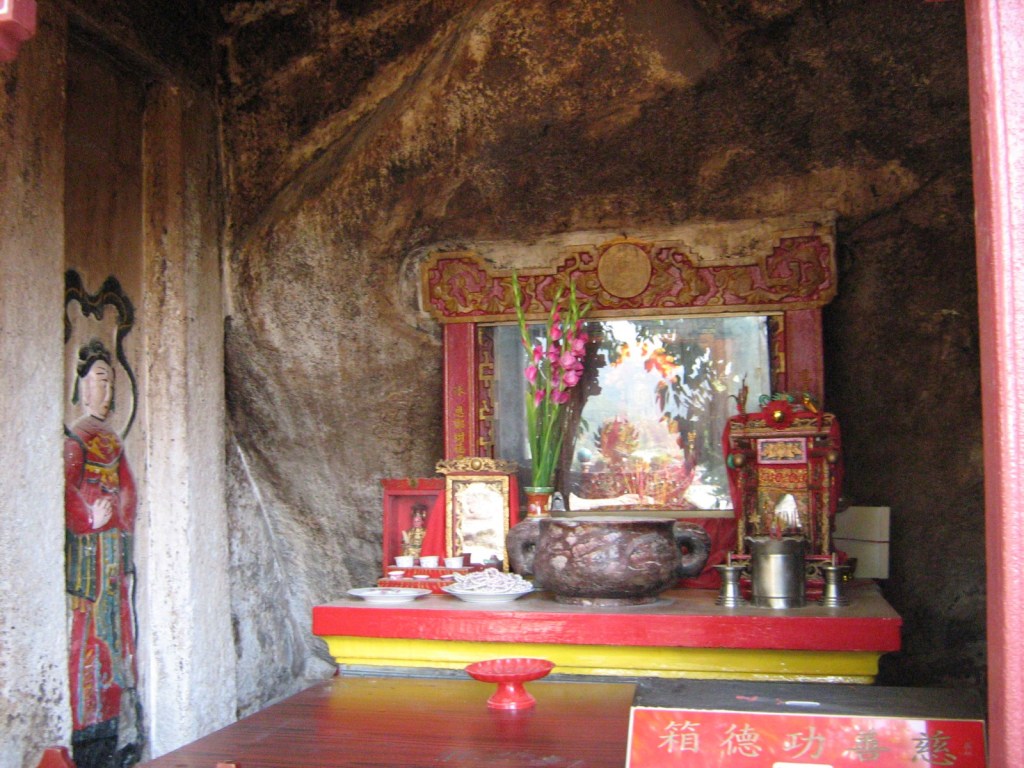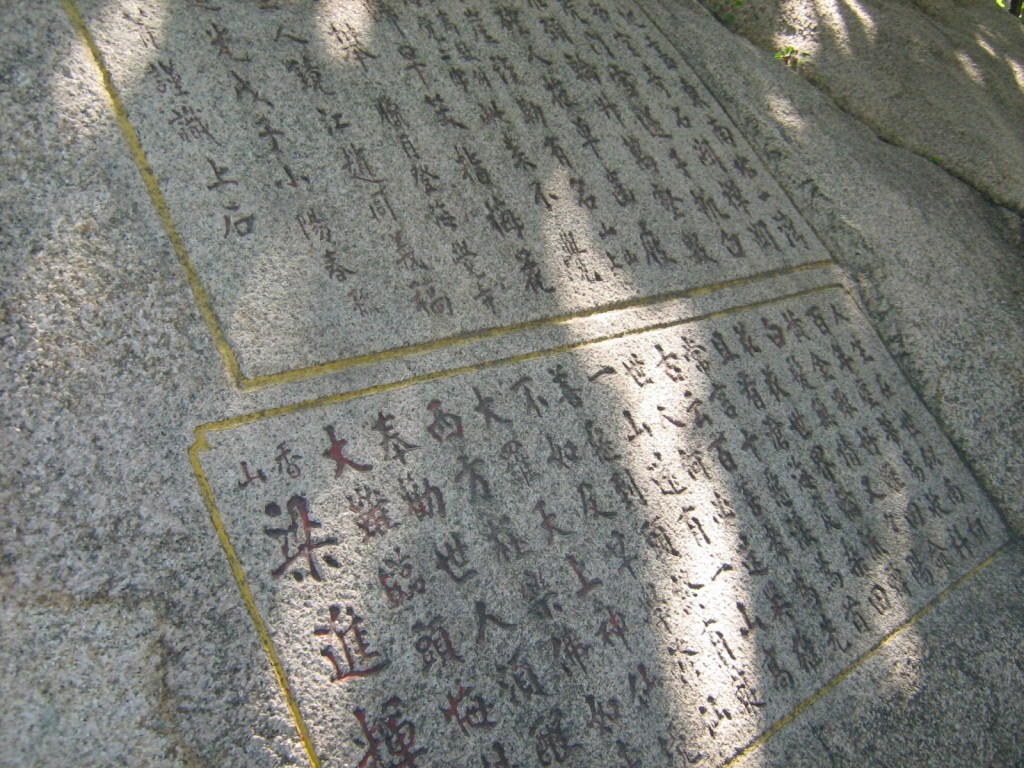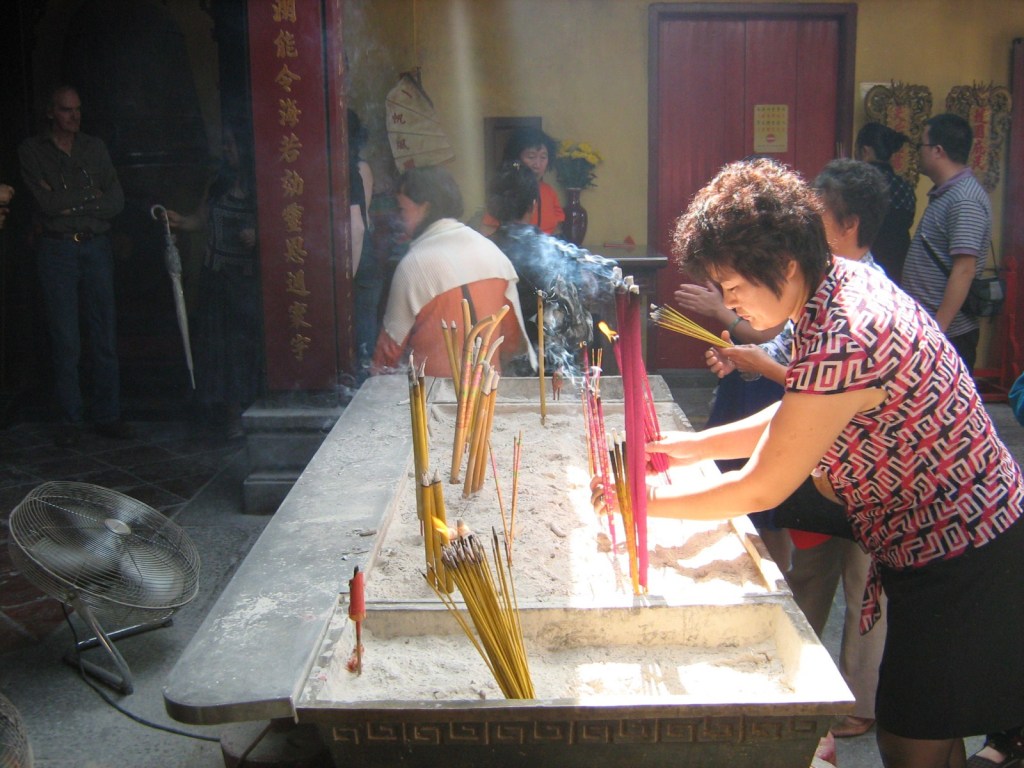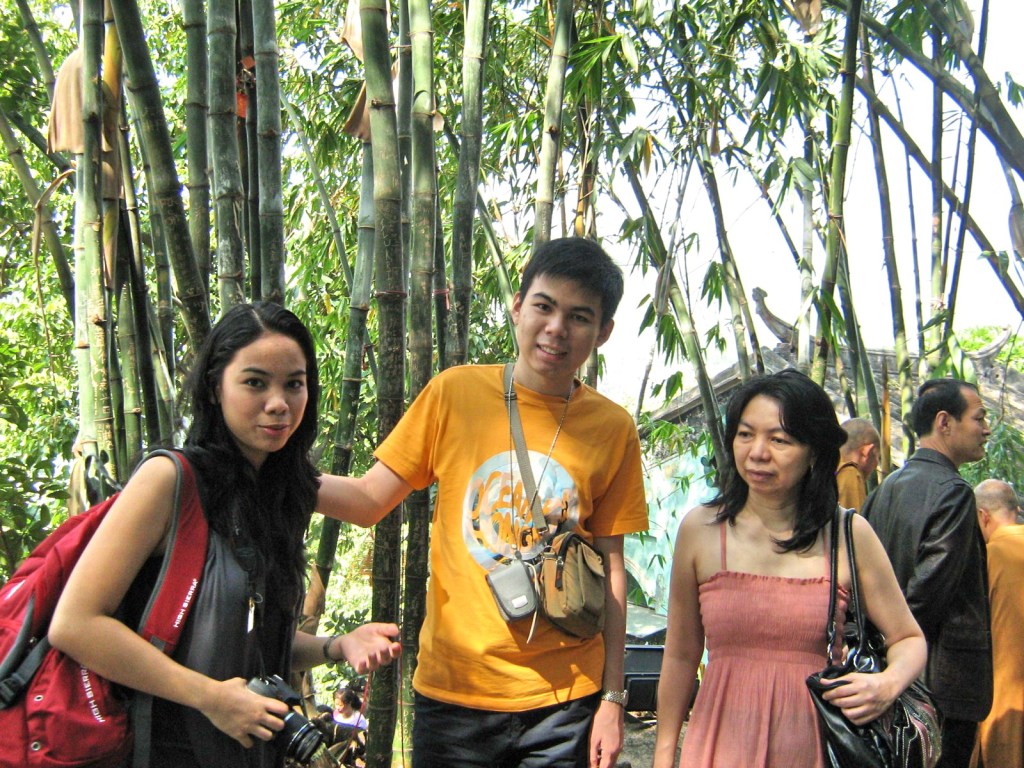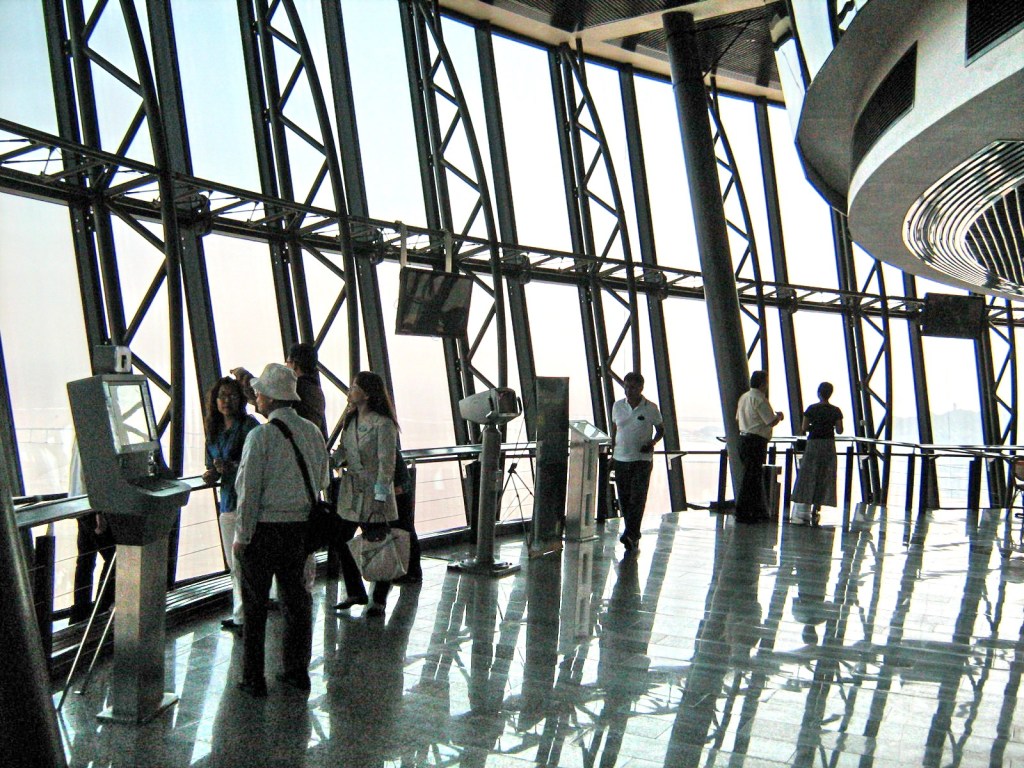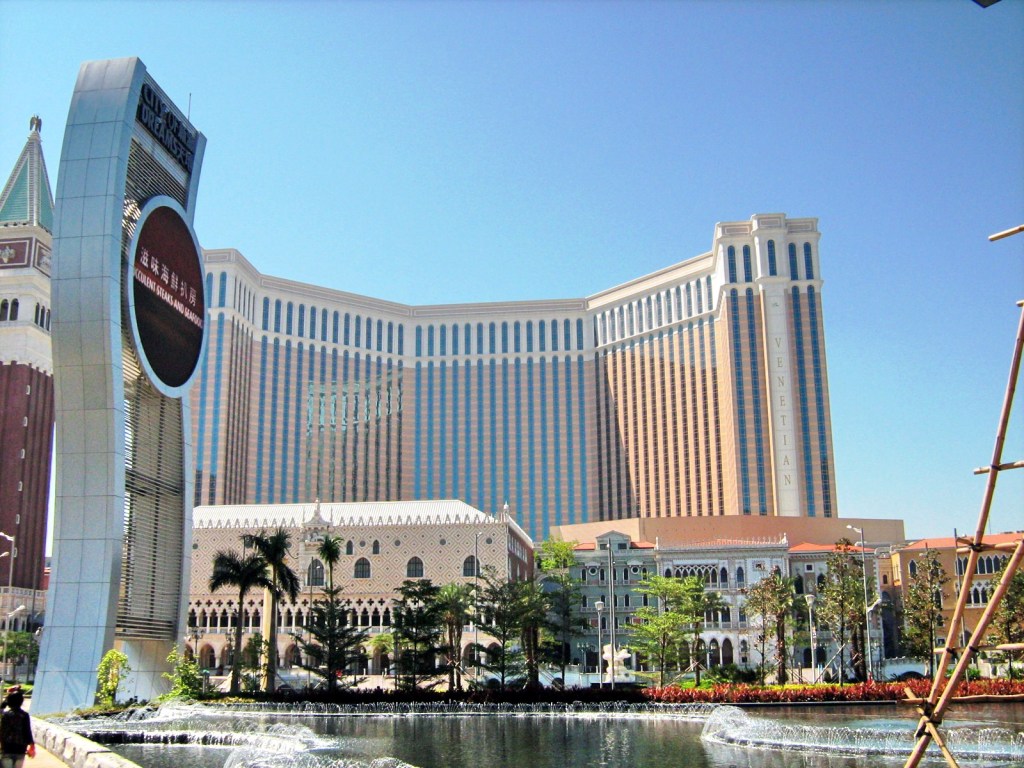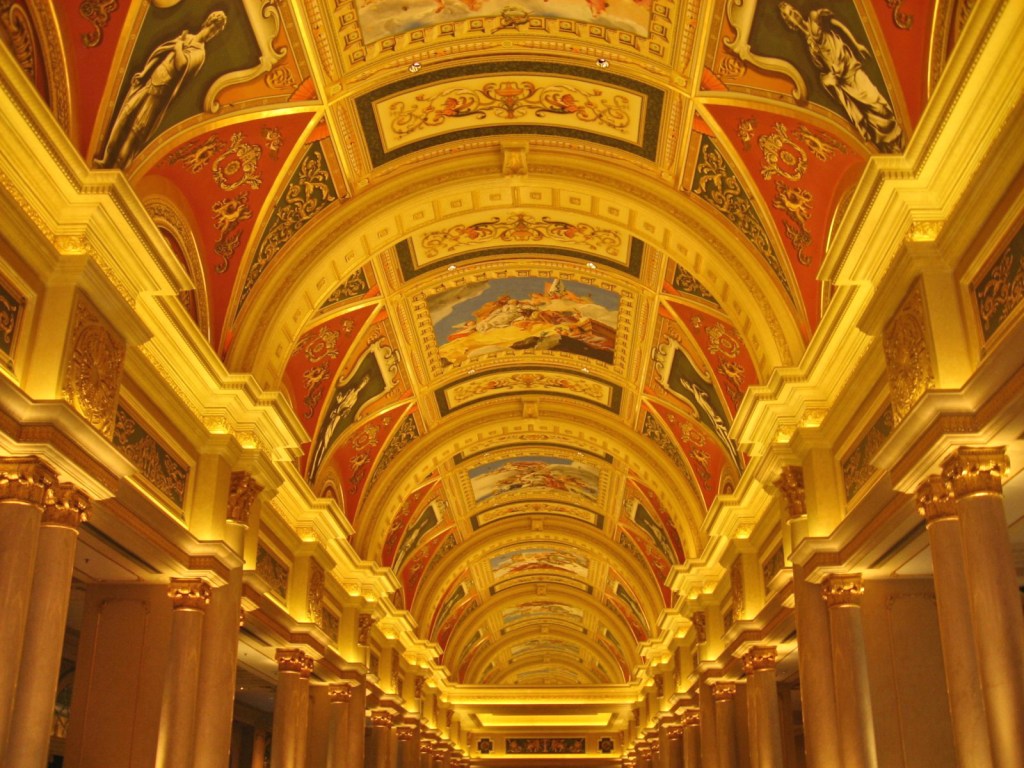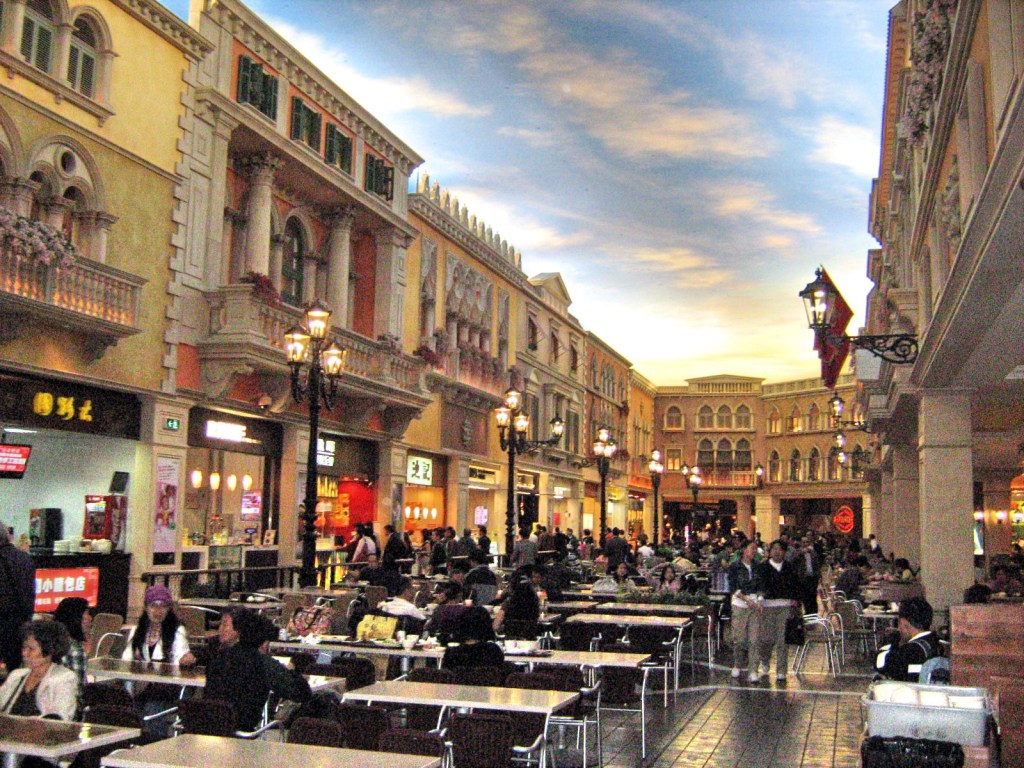From Largo de Leal Senado, Jandy, Cheska and I walked all the way to Augustine’s Square (Largo de Santo Agontinho), site of various classified buildings such as St. Augustine’s Church, Dom Pedro V Theater, St. Joseph’s Seminary and Sir Robert Ho Tung Library. Its cobblestone pavement unifies the area and reflects a traditionally Portuguese streetscape.
We first visited the Dom Pedro V Theater, built in 1860 and renovated in 1873. The first Western-style theater in China, today it is one of the most important cultural landmarks in the context of the local Macanese community and is a venue for important public events and celebrations that remains in use to this day. The Dom Pedro V Theater is Neo-Classical in design, incorporating a portico front on a rectilinear plan.
The facade is topped with a triangular pediment supported on 4 sets of Ionic columns. Three archways, each measuring 3 m. wide by 6 m. high, rise on pedestals resting on granite steps. The ornamentation on the green stucco facade is relatively restrained, with festoons above the arches and simple floral patterns around frames accentuated in white plaster. Similarly the cornice and architrave mouldings are highlighted in white, in contrast with the building.
















